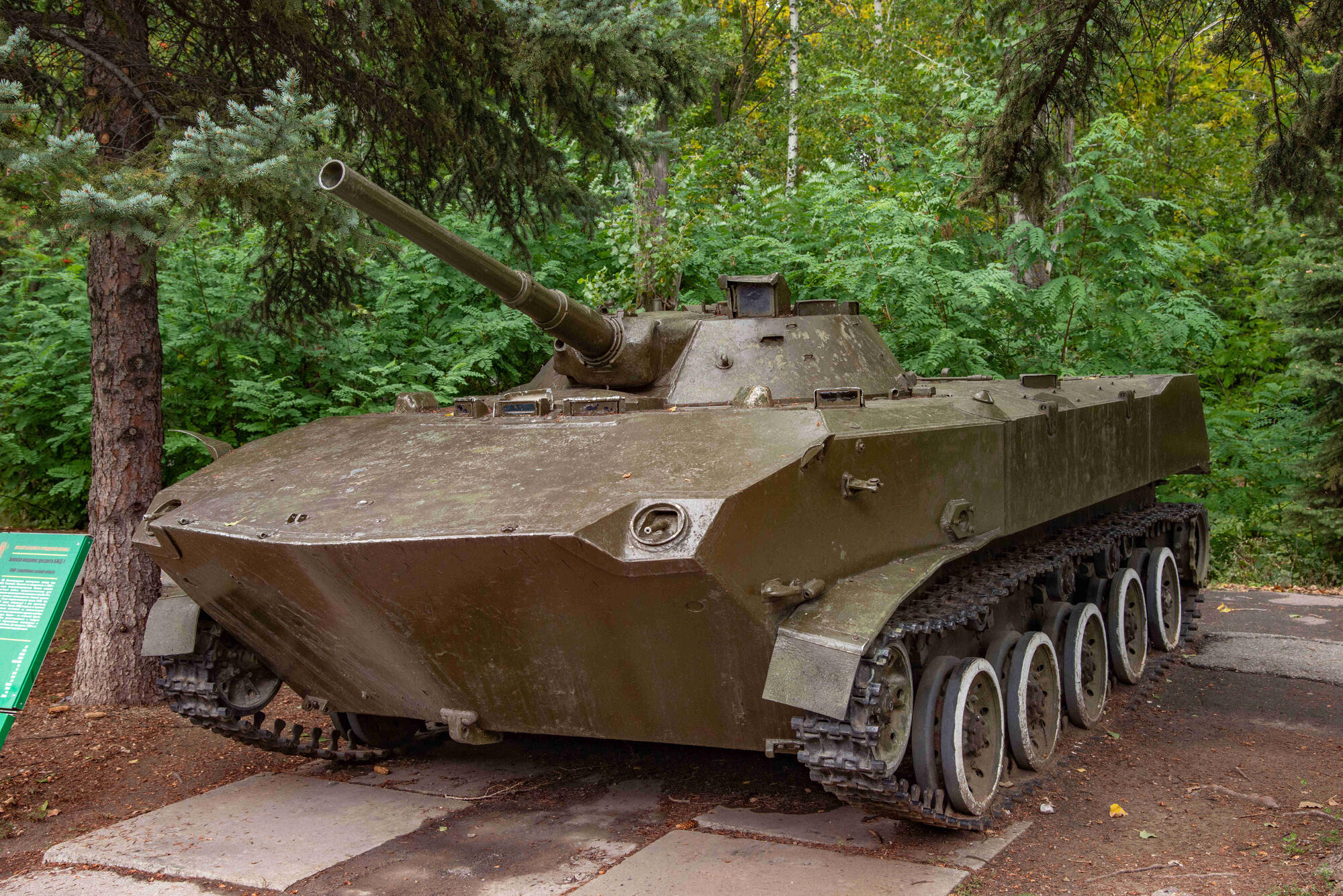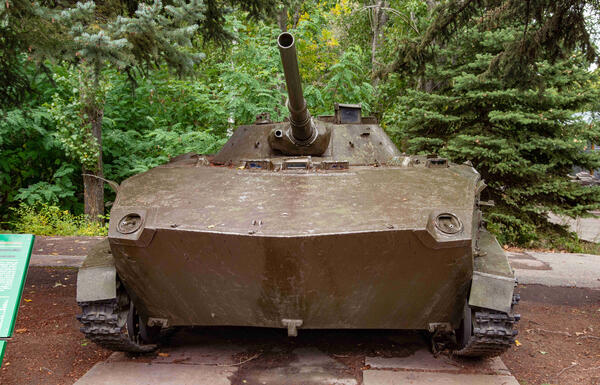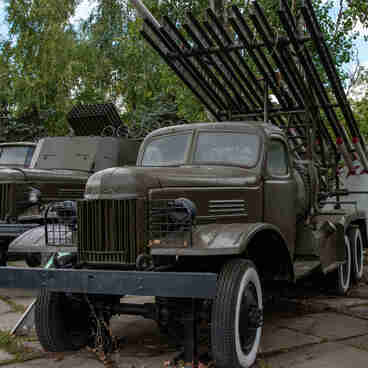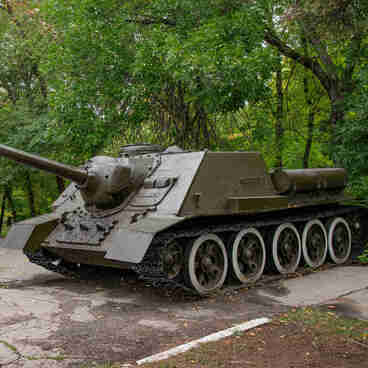Due to new requirements for amphibious operations, airborne troops needed a powerful combat vehicle. It was supposed to increase the firepower of paratroopers.
The BMD-1 airborne combat vehicle was developed in the design bureau of the Volgograd Tractor Plant. The project was led by Igor Valentinovich Gavalov. The initiative to develop this vehicle belonged to the commander of the Soviet Airborne Forces in 1954–1959, Vasily Filippovich Margelov.
The new military equipment was developed in close cooperation of various design bureaus, plants and institutes of the Ministry of Defense and the Ministry of Aviation Industry. The BMD-1 entered service in 1969.
The vehicle had a classic layout for tanks, but a quite unusual one for infantry fighting vehicles: the fighting compartment was located in the middle part of the hull, while the engine was placed in the rear part.
For the first time in Soviet mechanical engineering, the vehicle’s armor was made of aluminum alloy. It protected the crew from 7.62mm small arms fire and shell fragments. It was decided to make the turret of steel armor. The BMD-1 had the same turret as the BMP-1.
The amphibious assault combat was equipped with a 73mm 2A28 smoothbore “Grom” gun, three 7.62mm Kalashnikov machine guns — one coaxial and two in fixed mounts, and a 9M14 “Malyutka” (“Little one”) anti-tank guided missile launcher.
The air supply system was distinguished by the air intake system, which consisted of two kinematically connected valves. They alternately blocked the air intake from outside the vehicle and from the fighting compartment. This feature increased the safety of the vehicle while afloat.
In the BMD-1, the sucked-in air was heated by the engine. Special parachute platforms and multi-dome parachute systems were used for landing. The vehicle was mass-produced mainly at the Volgograd Tractor Plant. 1639 vehicles of various modifications came off the assembly line from 1968 to 1989.
A small number of vehicles of various modifications are to this day used by the Airborne Forces of the Russian Federation and CIS countries. The BMD-1 was used in action during combat operations in the Republic of Afghanistan.
The BMD-1 airborne combat vehicle was developed in the design bureau of the Volgograd Tractor Plant. The project was led by Igor Valentinovich Gavalov. The initiative to develop this vehicle belonged to the commander of the Soviet Airborne Forces in 1954–1959, Vasily Filippovich Margelov.
The new military equipment was developed in close cooperation of various design bureaus, plants and institutes of the Ministry of Defense and the Ministry of Aviation Industry. The BMD-1 entered service in 1969.
The vehicle had a classic layout for tanks, but a quite unusual one for infantry fighting vehicles: the fighting compartment was located in the middle part of the hull, while the engine was placed in the rear part.
For the first time in Soviet mechanical engineering, the vehicle’s armor was made of aluminum alloy. It protected the crew from 7.62mm small arms fire and shell fragments. It was decided to make the turret of steel armor. The BMD-1 had the same turret as the BMP-1.
The amphibious assault combat was equipped with a 73mm 2A28 smoothbore “Grom” gun, three 7.62mm Kalashnikov machine guns — one coaxial and two in fixed mounts, and a 9M14 “Malyutka” (“Little one”) anti-tank guided missile launcher.
The air supply system was distinguished by the air intake system, which consisted of two kinematically connected valves. They alternately blocked the air intake from outside the vehicle and from the fighting compartment. This feature increased the safety of the vehicle while afloat.
In the BMD-1, the sucked-in air was heated by the engine. Special parachute platforms and multi-dome parachute systems were used for landing. The vehicle was mass-produced mainly at the Volgograd Tractor Plant. 1639 vehicles of various modifications came off the assembly line from 1968 to 1989.
A small number of vehicles of various modifications are to this day used by the Airborne Forces of the Russian Federation and CIS countries. The BMD-1 was used in action during combat operations in the Republic of Afghanistan.



